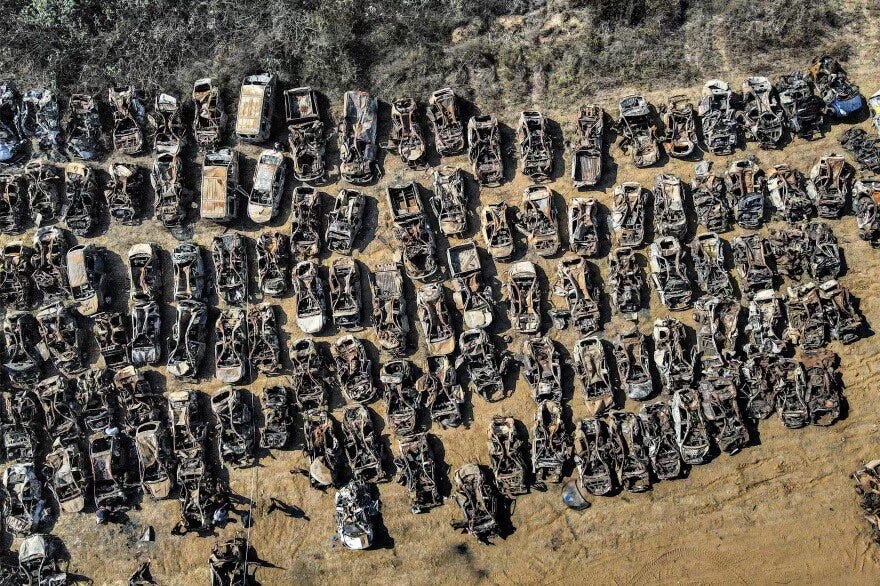
"You're looking at one of the most haunting images of this entire genocide - rows upon rows of burned-out cars, the vehicles that Israeli officials told the world were destroyed by Hamas on October 7th. But that's a lie. Every single car in this image was blown up by Israeli bombs, missiles, or drones - part of what they themselves call the Hannibal Directive: a standing military order to kill their own citizens rather than allow them to be captured alive."
"They did it knowingly. They've admitted as much. But they buried the story under layers of propaganda, branding it all as "Hamas atrocities." But Hamas didn't have one helicopter or plane to drop bombs and missiles that all did this damage. They were mainly men on foot using rifles and handguns. They couldn't have caused this kind of damage if they wanted to."
"Israel's entire campaign of extermination has depended on the world believing Hamas alone caused the carnage that morning. But the evidence - including their own leaked radio transmissions - proves otherwise. These aren't Hamas' victims. They are victims of the Israeli army. International law calls this what it is: a war crime against one's own civilians, and the deliberate destruction of evidence."
Rows of burned-out vehicles from October 7 show destruction caused by Israeli bombs, missiles, or drones rather than by Hamas. The Hannibal Directive authorized lethal force to prevent captures, prompting strikes on convoys fleeing the Nova festival that incinerated civilians. Israeli authorities have admitted actions consistent with that doctrine while portraying the damage as Hamas atrocities. Evidence cited includes leaked radio transmissions and survivor testimony describing tanks and helicopters firing indiscriminately. International law classifies intentional killing of one's own civilians and deliberate destruction of evidence as war crimes.
Read at Thenorthstar
Unable to calculate read time
Collection
[
|
...
]